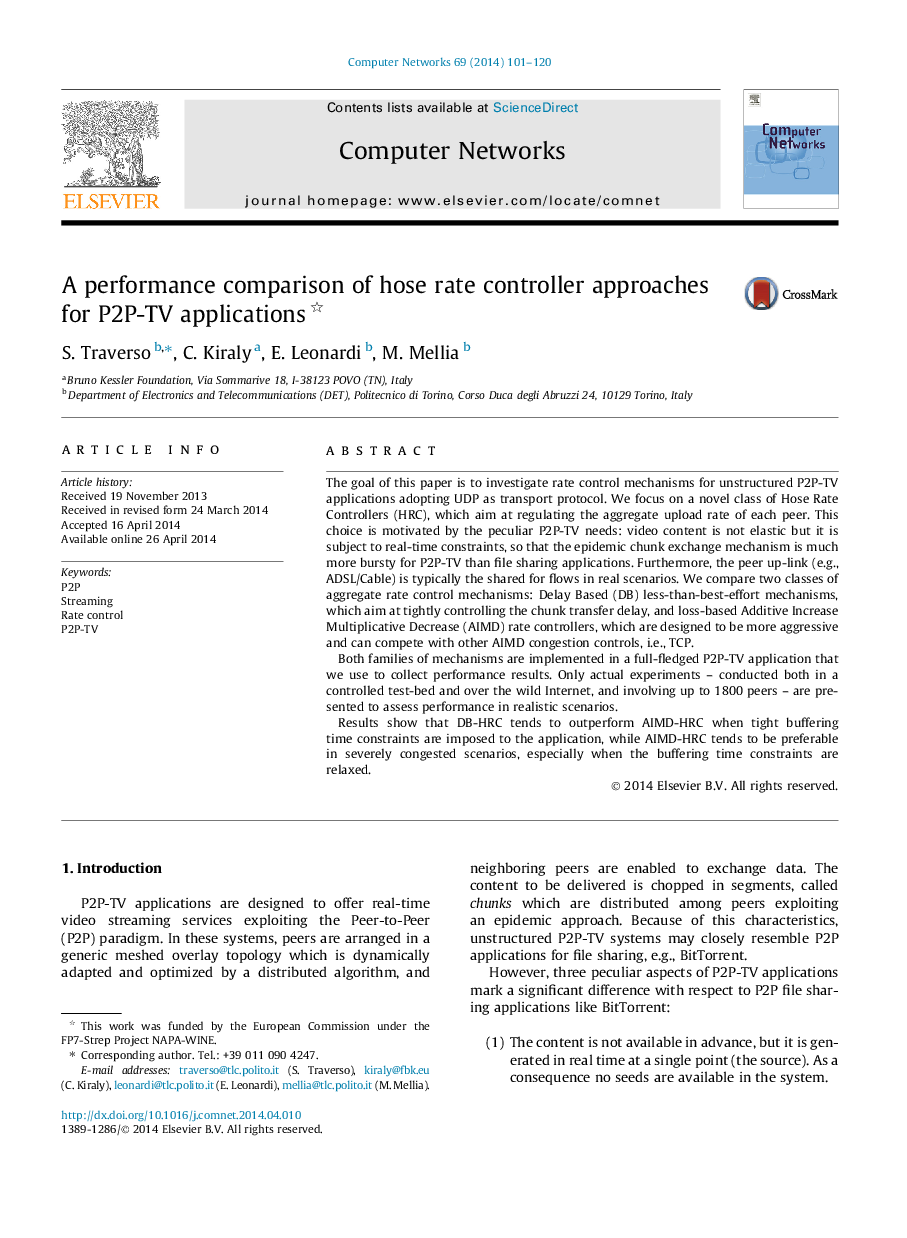| کد مقاله | کد نشریه | سال انتشار | مقاله انگلیسی | نسخه تمام متن |
|---|---|---|---|---|
| 451040 | 694227 | 2014 | 20 صفحه PDF | دانلود رایگان |

The goal of this paper is to investigate rate control mechanisms for unstructured P2P-TV applications adopting UDP as transport protocol. We focus on a novel class of Hose Rate Controllers (HRC), which aim at regulating the aggregate upload rate of each peer. This choice is motivated by the peculiar P2P-TV needs: video content is not elastic but it is subject to real-time constraints, so that the epidemic chunk exchange mechanism is much more bursty for P2P-TV than file sharing applications. Furthermore, the peer up-link (e.g., ADSL/Cable) is typically the shared for flows in real scenarios. We compare two classes of aggregate rate control mechanisms: Delay Based (DB) less-than-best-effort mechanisms, which aim at tightly controlling the chunk transfer delay, and loss-based Additive Increase Multiplicative Decrease (AIMD) rate controllers, which are designed to be more aggressive and can compete with other AIMD congestion controls, i.e., TCP.Both families of mechanisms are implemented in a full-fledged P2P-TV application that we use to collect performance results. Only actual experiments – conducted both in a controlled test-bed and over the wild Internet, and involving up to 1800 peers – are presented to assess performance in realistic scenarios.Results show that DB-HRC tends to outperform AIMD-HRC when tight buffering time constraints are imposed to the application, while AIMD-HRC tends to be preferable in severely congested scenarios, especially when the buffering time constraints are relaxed.
Journal: Computer Networks - Volume 69, 20 August 2014, Pages 101–120